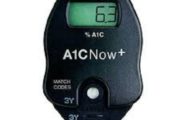Cholesterol is a fat, or lipid. It is also a sterol, from which steroid hormones are made. If you held cholesterol in your hand, you would see a waxy substance that resembles the very fine scrapings of a whitish-yellow candle. Cholesterol flows through your body via your bloodstream, but this is not a simple process. Because lipids are oil-based and blood is water-based, they don’t mix. If cholesterol were simply dumped into your bloodstream, it would congeal into unusable globs. To get around this problem, the body packages cholesterol and other fats into minuscule protein-covered particles called lipoproteins (lipid + protein) that do mix easily with blood. The proteins used are known as apolipoproteins.
The fat in these particles is made up of cholesterol and triglycerides and a third material I won’t discuss much, phospholipid, which helps make the whole particle stick together. Triglycerides are a particular type of fat that have three fatty acids attached to an alcohol called glycerol—hence the name. They compose about 90 percent of the fat in the food you eat. The body needs triglycerides for energy, but as with cholesterol, too much is bad for the arteries and the heart.
Warning: file_get_contents(https://plusone.google.com/_/+1/fastbutton?url=https%3A%2F%2Fkigalihealth.com%2Fwhat-is-cholesterol%2F): failed to open stream: HTTP request failed! HTTP/1.0 404 Not Found in /home/kigal4health/public_html/wp-content/themes/goodnews5/goodnews5/framework/functions/posts_share.php on line 151





